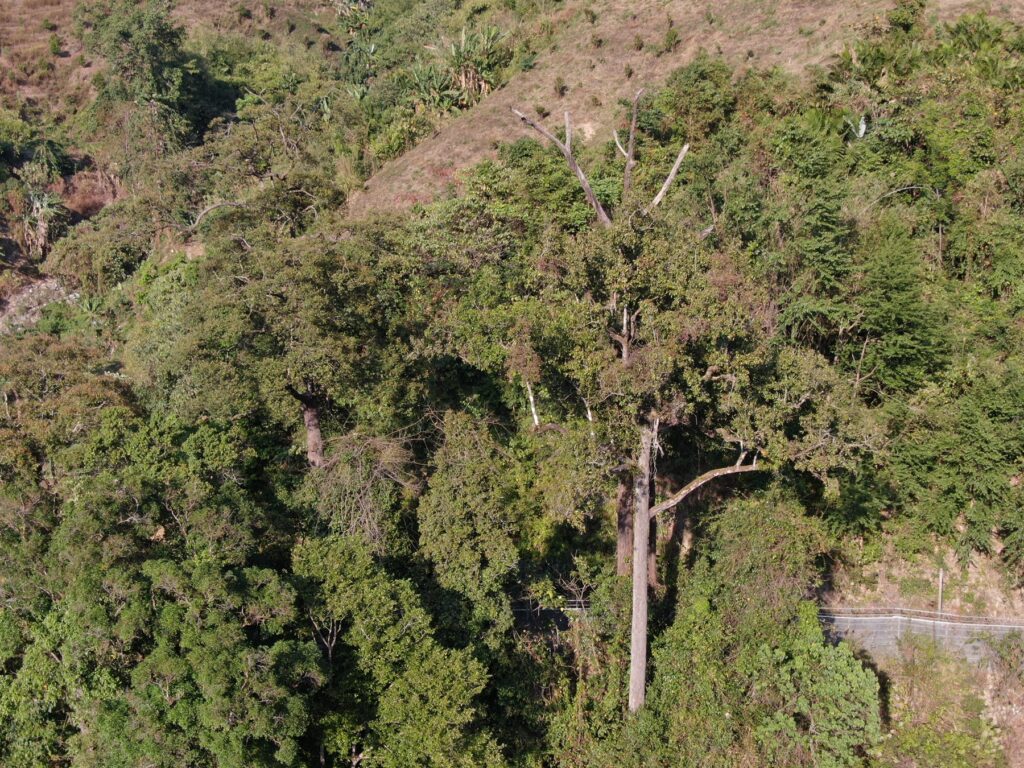In early April 2023, researchers from Xishuangbanna Tropical Botanical Garden (XTBG)discovered a newly recorded species of Dipterocarpaceae from Tongbiguan Provincial Nature Reserve of Yunnan, Southwest China.This species as identified as Parashorea buchananii (C.E.C.Fisch.) Symington by Prof. TAN Yunhong, principal investigator of the Plant Diversity and Conservation Research Group of XTBG. This discovery increased the native species of Dipterocarbaceae in China to 12 species from five genera.
Parashorea buchananii is a tall evergreen tree with a height of 35-50 meters and a diameter at a breast height of over 1.3 meters. It is a precious timber species and a cluster species in the Tropical rainforests. The earliest specimen was collected by Buchanan in Myitkyina, Burma, in September 1912, and Parkinson collected again in November 1925, both of which were flowering specimens.
Since then, there has been no collection record for nearly 100 years. This discovery in Yingjiang is the first record in China. Parashorea buchanani is a major discovery of Dipterocarpaceae in China in recent years, which is of high research and conservation value. According to the field investigation, only one population has been found in Yingjiang, Yunnan, Southwest China.
During this field expedition, the research team collected seeds of Parashorea buchananii and is doing seed germination in XTBG and Tongbiguan Provincial Nature Reserve of Yunnan respectively. The next step will be population propagation, regression, and protection.

